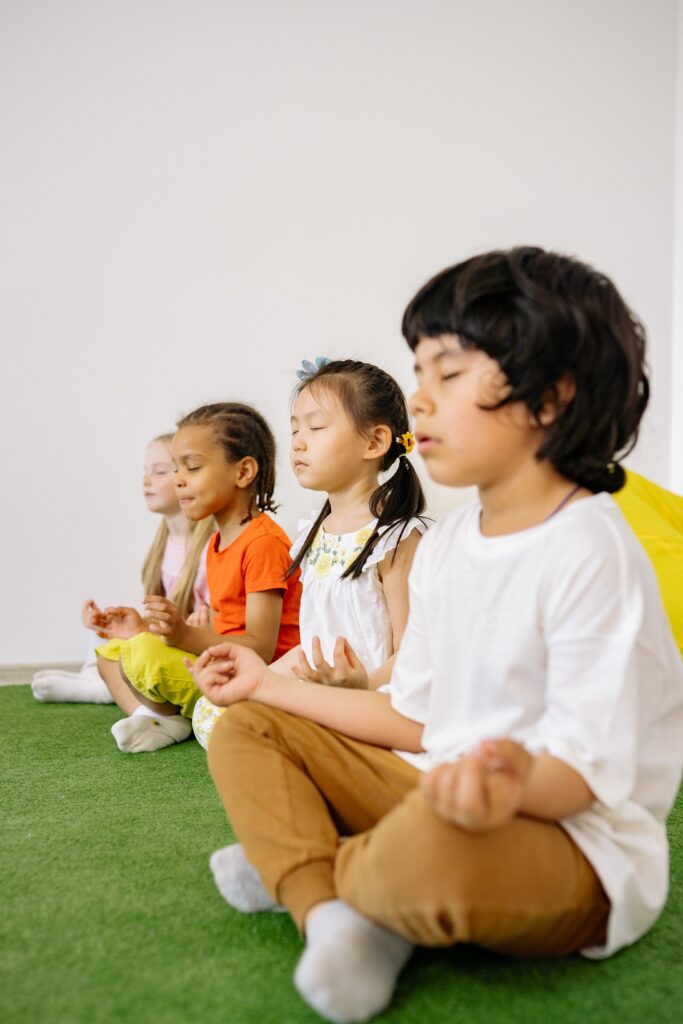New from the @EmoryCSHH News Team:
Fear of privacy violations in wake of 23andMe bankruptcy and sale, another round of NIH lay-offs with more coming, how the body experiences pregnancy and recovery from childbirth, and Utah's water fluoridation ban.

Students have been rolling out yoga mats in the gym to practice deep breathing exercises on “Mindful Mondays” and “Namaste Tuesdays” at Atlanta public school Beecher Hill Elementary. In Baltimore, a high school’s detention room is stocked with essential oils and floor pillows, and students who arrive frustrated or anxious are led through breathing exercises and stretching. These schools are utilizing techniques of mindfulness, and administrators hope that these techniques may be a better alternative to typical behavioral interventions like detention.
Mental health awareness in schools has been increasing recently, as research has shown decline in mental health even among children. Nearly one in five U.S. children between the ages of 3 and 17 have a mental, emotional, or behavioral disorder, and 37% of students over the age of 14 with a mental health condition drop out of school. The COVID-19 pandemic has exacerbated this situation — in a recent poll conducted by the Children’s Hospital of Chicago, 71% of parents believed that the pandemic had taken a toll on their child’s health. Because schools have such a large influence on children’s learning, behavioral, and health outcomes, some are turning to mindfulness as a way to positively impact their students’ lives. They believe that mindfulness may help alleviate students’ stress and anxiety, reduce disruptive behavior, and even improve learning and academic outcomes.

According to the Mayo Clinic, mindfulness is “a type of meditation in which you focus on being intensely aware of what you’re sensing and feeling in the moment, without interpretation or judgment.” Mindfulness is not a religion-based practice. Some of the techniques that people use to practice mindfulness include breathing, imagery, yoga or stretching. Overall, the Mayo Clinic reports that the evidence shows that it can be effective in reducing stress, anxiety, pain, and even high blood pressure.
Additionally, studies have shown that mindfulness practices can be helpful in schools in a variety of ways— improving attention, cognitive development, social and emotional skills, and reducing anxiety, stress, and depression. One study published in 2013 in the journal Research and Human Development investigated “Learning to BREATHE,” a mindfulness program developed by Myla and Jon Kabat-Zinn that has been implemented in several schools across the country and internationally. The program was designed to facilitate the development of emotion regulation and attentional skills for middle and high school students.” The researchers, a team drawn from several Pennsylvania universities and high schools, found that participants in this mindfulness program reported statistically lower levels of stress and larger gains in emotional regulation skills.
There’s more evidence to support the use of mindfulness in schools. Another study published in 2015 by a team of researchers from the University of British Columbia in the journal Developmental Psychology looked at the impact of a social-emotional learning program on students between 9 and 11 years old. The elementary school program that was studied provided once per week sessions of about 45 minutes for twelve weeks, which involved asking participants to focus on breathing, attentive listening, performing acts of kindness, and community service learning activities. This program is intended to help work towards “changing the ecology of the classroom environment to one in which caring, collaboration, and understanding others is emphasized to create a positive classroom milieu.” The study found that in this case, children who were in the program increased their feelings of empathy and optimism, increased their emotional and cognitive control, and decreased feelings of depression and aggression.

Both of these studies, as well as others, show positive impacts of mindfulness education. But implementing these practices isn’t so simple. Some schools have had the opportunity to work with organizations like the Namaste Project, which “provides mindfulness training to schools, businesses, community organizations and parents in order to #spreadthecalm and improve communities.” But for others, implementing this training can be costly, time-intensive, and difficult. A set of curricular resources from Empowering Education costs $1500, and this doesn’t even consider the time, effort, and personnel required to implement the programs. For $6500 plus travel expenses, and by spending 300 hours learning and attending a retreat, a teacher can be certified as a “Mindful Teacher” by Mindful Schools. Resources like this aren’t accessible to the schools who need this type of program most.
The evidence-based promises of mindfulness education are a beacon of hope during a time when even very young students are increasingly experiencing high levels of stress and anxiety. Some organizations are working to make this education accessible to low-resourced school districts, but in many cases this proven method of improving students’ learning and experiences is not a feasible option.


